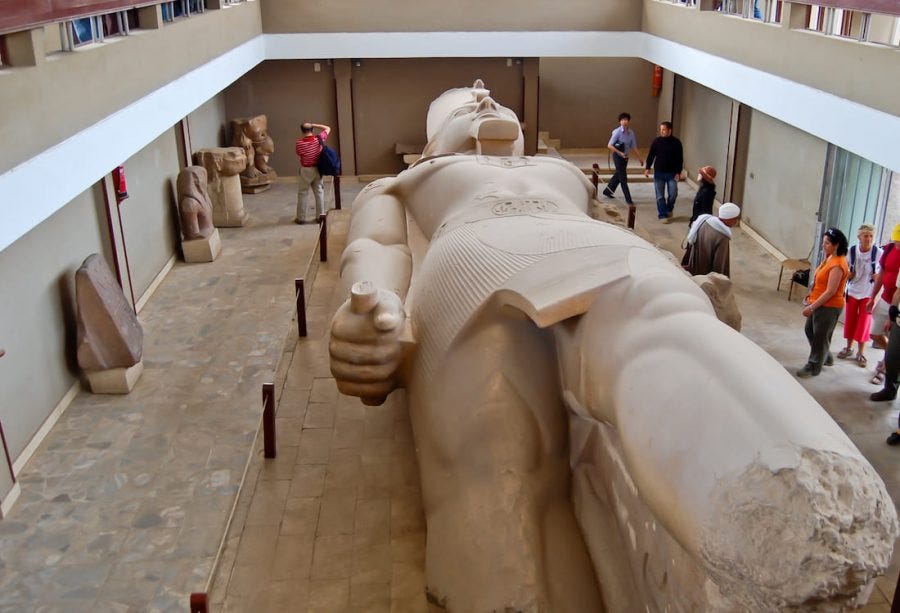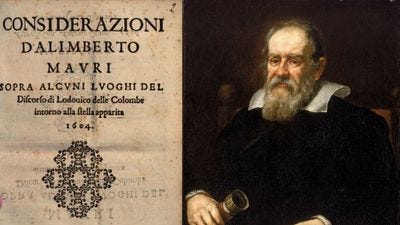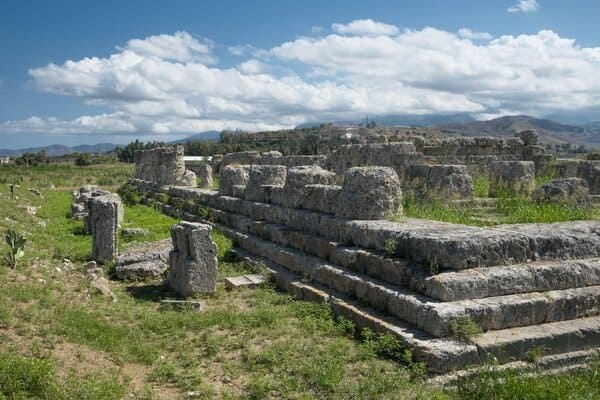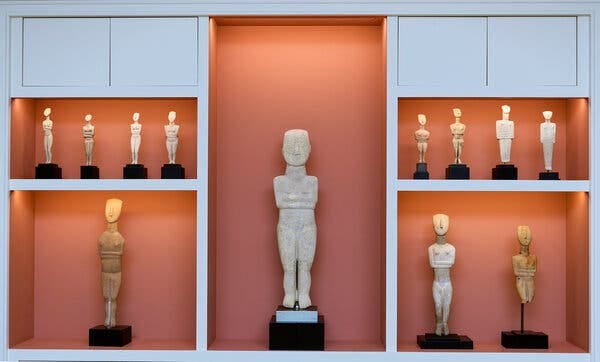Weekly Roundup- October 23rd
More on Tut's cartouches, illegal digging, Galileo's subtweet, and much more!
More Sleuthing into the Tutankhamun Cartouche Reuse
Since our October 7th Afterlives post, we have been looking further into Dr. Reeves’ reused cartouche idea, which suggests cartouches of Tutankhamun were changed to those of Ay. Some experts have questioned the writing of Ay’s name with three kheper beetles instead of the more documented way depicted below:
You can see how the artists had to “fiddle” with Tutankahumun’s names to work them into Ay’s: they kept and extended the third kheper beetle from Tut’s name for Ay’s even though normally Ay’s name has the plurality denoted by the 3 strokes and the epithet ir(w) ma’at (see above example). This was done to absorb the neb-basket from Tut’s name.
Kylie Thomsen, a PhD Candidate at UCLA also performed various image enhancing techniques on the image. In one enhancement you can see the reed-leaf and the top of the neb-basket below the bottom kheper-beetle. We suspect the line around the cartouches was also thickened, almost certainly in Egyptian Blue pigment.

If you want to delve into the debate further, read Nicholas Reeves’ work on the subject. There’s much more evidence, including architectural and art historical:
Reeves, Nicholas 2019. The decorated north wall in the tomb of Tutankhamun (KV 62) (The burial of Nefertiti? II). Amarna Royal Tombs Project - Valley of the Kings, Occasional Paper 3. n.p.: ARTP.
Reeves, Nicholas 2016. Tutankhamun's mask reconsidered. In Elleithy, Hisham (ed.), Valley of the Kings since Howard Carter: proceedings of the Luxor Symposium November 4, 2009, 117-134. Cairo: Ministry of Antiquities.
Reeves, Nicholas 2015. The tomb of Tutankhamun: a double burial? British Archaeology 145, 36-39.
Reeves, Nicholas 2015. The burial of Nefertiti? Amarna Royal Tombs Project - Valley of the Kings, Occasional Paper 1. [n.p.]: ARTP.
Another illegal dig unearths archaeological discovery in Egypt's Giza
Illegal digging continues around Mit Rahina, the site of ancient Egypt’s capital Memphis. Three individuals were arrested after they were found digging a tunnel that led to two limestone chambers. Experts believe these date to the Ramesside period and might be a connection to a temple or cemetery in the area.
Such a situation brings up conflicting emotions. Yes, illegal digging and trafficking of antiquities is bad, connecting to trafficking of other things, including drugs, weapons, and even people. But underprivileged people driven to the brink of economic instability are sometimes pushed to such ventures to provide for their families. The wealthy buyers that create the demand for the illegal antiquities market, however, are very much to blame. They exploit situations like these—think of the Tutankhamun stela smuggled out of the country by former Louvre director Jean-Luc Martinez.

Galileo Used A False Name To Mock The Astronomical Claims Of Another Philosopher
Galileo invented sub-tweeting! Writing as Alimbeto Mauri, Galileo attacked Lodovico delle Comlombe, a believer that the earth was the center of the universe and that the stars were fixed. Galileo disagreed and argued his point in a treatise using his Mauri-name.
Why didn’t Galileo just pen the treatise himself? Galileo was actually looking for a new patron, but did not want to invoke the ire of his current one, so he ‘job hunted’ using his various noms de plume.

Hidden in 54 Corpses, a Revelation About Ancient Greece
A recent study on recovered remains of Greek soldiers from the Battle of Himera, Sicily reveal that some of the soldiers were from modern-day Latvia, Ukraine, and Bulgaria. This brings up some questions: what did it mean to be Greek at that time? How did those individuals identify? We know DNA does not tell us the whole story, especially with race and ethnicity. We as ancient historians must be careful to ascribe identities to people in the past solely from DNA data. In other words, nationalistic, hard-right actors often use such ancient DNA data to create original claims to land or to demonstrate that others were, and thus are, interlopers. We’re not saying such DNA studies should be avoided entirely, but that researchers must be very careful with analysis and publication, lest they be misused.

Leonard Stern’s Cycladic Art Will Be Shown at the Met but Owned by Greece
The private collection of Cycladic art of Leonard Stern, a businessman and philanthropist will go on display at the MET. But what is unique about this new exhibit is that 15 of the finest pieces will first be shown at the Museum of Cycladic Art in Athens with the MET collection, acknowledging that the collection belongs to the Greek state.
The collection will be on view at the MET for the next 10 years. In 2049 Greece then has the choice to continue to loan the pieces at 25 year integrals or to call for the return of the collection.
This is a great example of cooperation between museums and foreign governments and rich donor people!

Why are adult daughters missing from ancient German cemeteries?
A recent study looking at kinship relationships through the aDNA of 104 individuals from cemeteries dating from the Late Neolithic to Middle Bronze age in Southern Germany found them to be exogamous and patrilocal. This means that women left their kinship groups, ostensibly through marriage, and joined another kinship group. There were no adult daughter remains in the cemeteries because they had all moved to other places. The women in the cemeteries were genetic outsiders—their teeth showed that they grew up at least 350 kilometers away. Meanwhile, the males were born and died in the same region.
What impact might this have on the growth of the patriarchy? If women were always being uprooted and sent away how could any female power be acquired, fostered and passed along? Think about this for a minute: it means that from its earliest days, patriarchy constantly uprooted the females, keeping them off balance, separating them from their circles of social power, from generation to generation. It makes women work against women. It’s where the evil mother-in-law trope comes from. It’s where the mean-girls trope comes from. If that seems insidious, well, that’s because it is… 🖤








